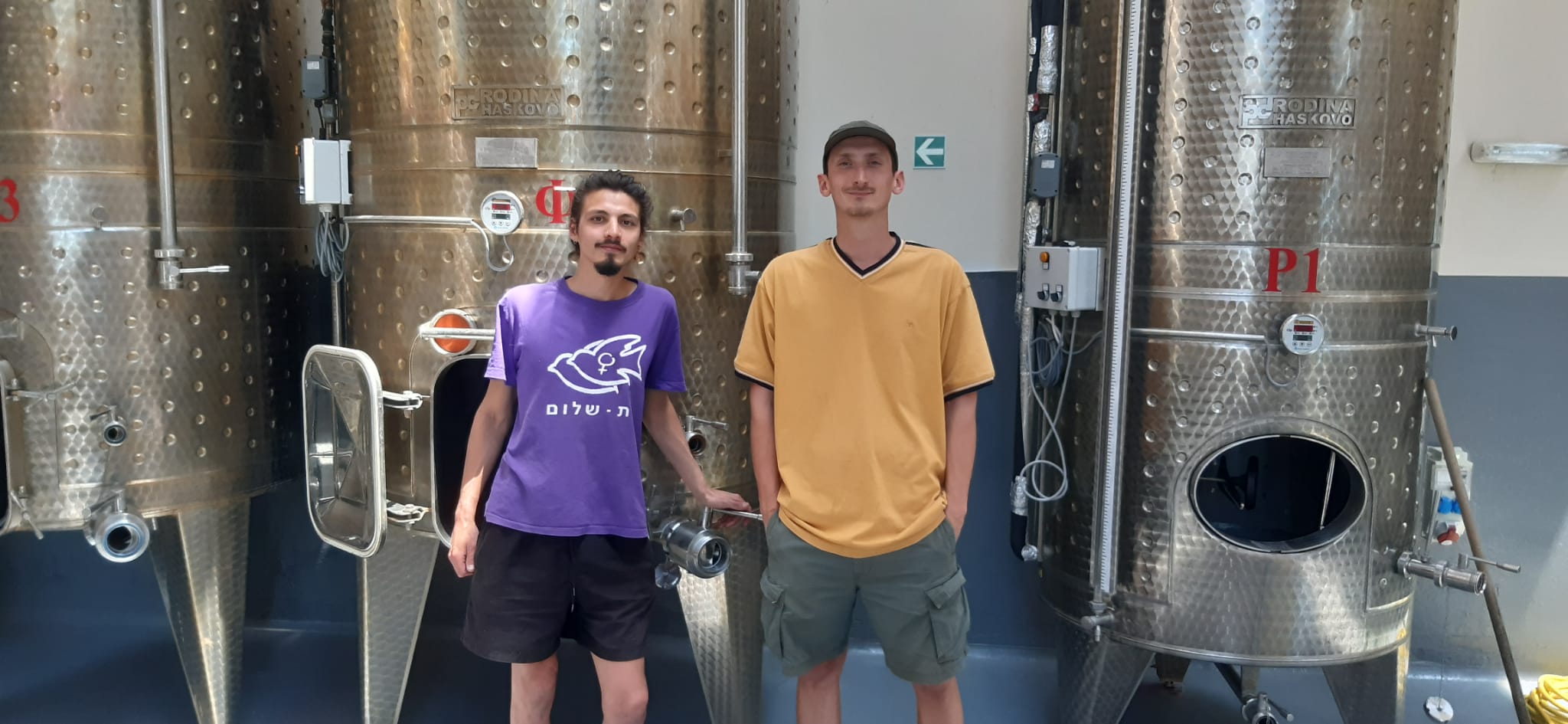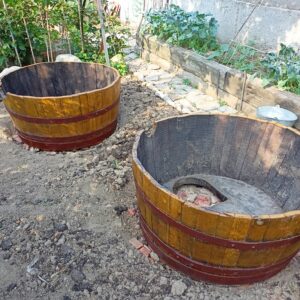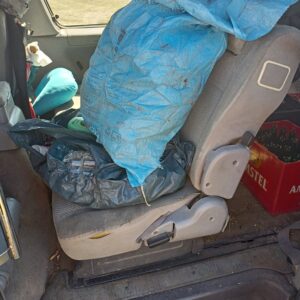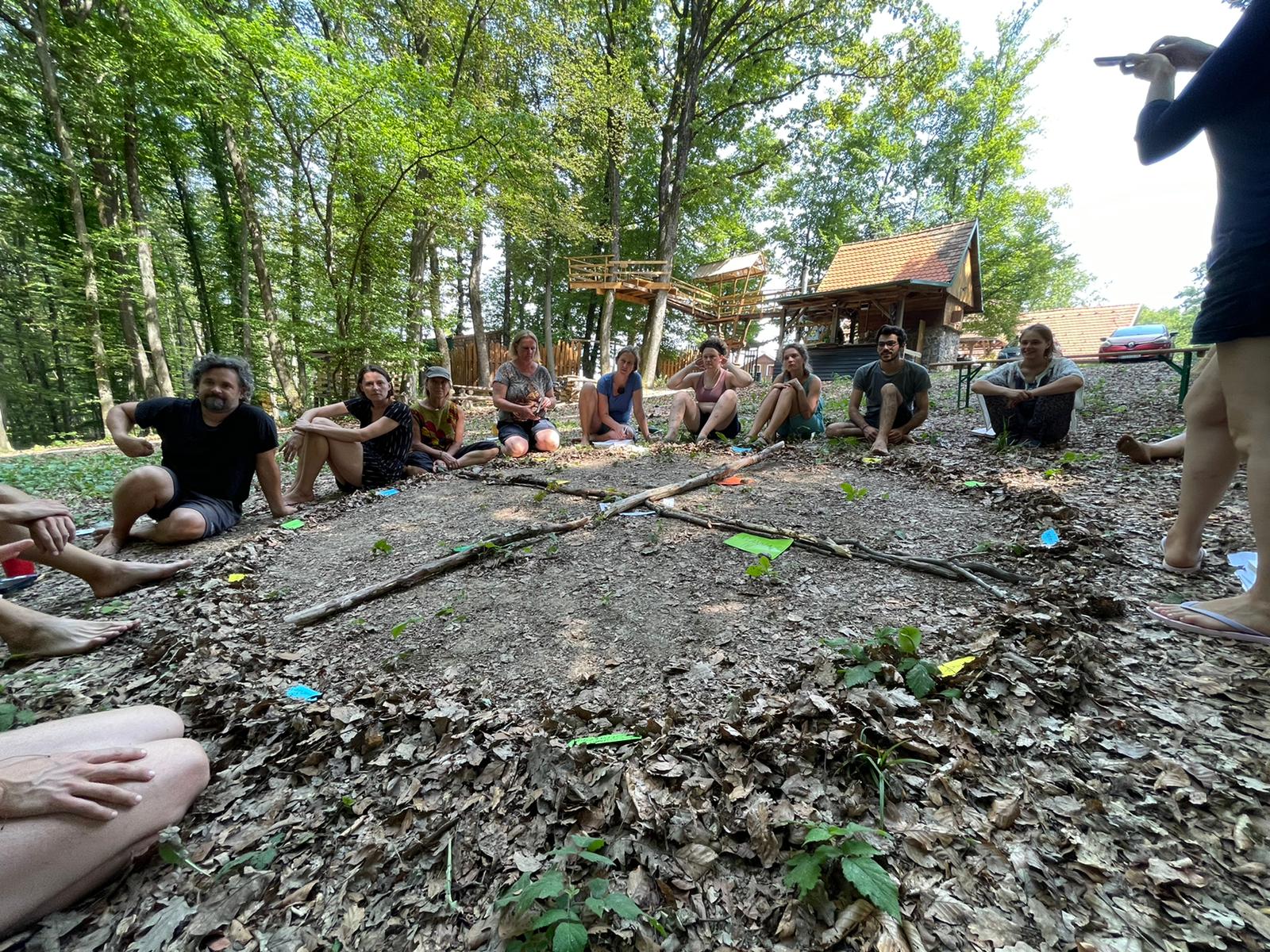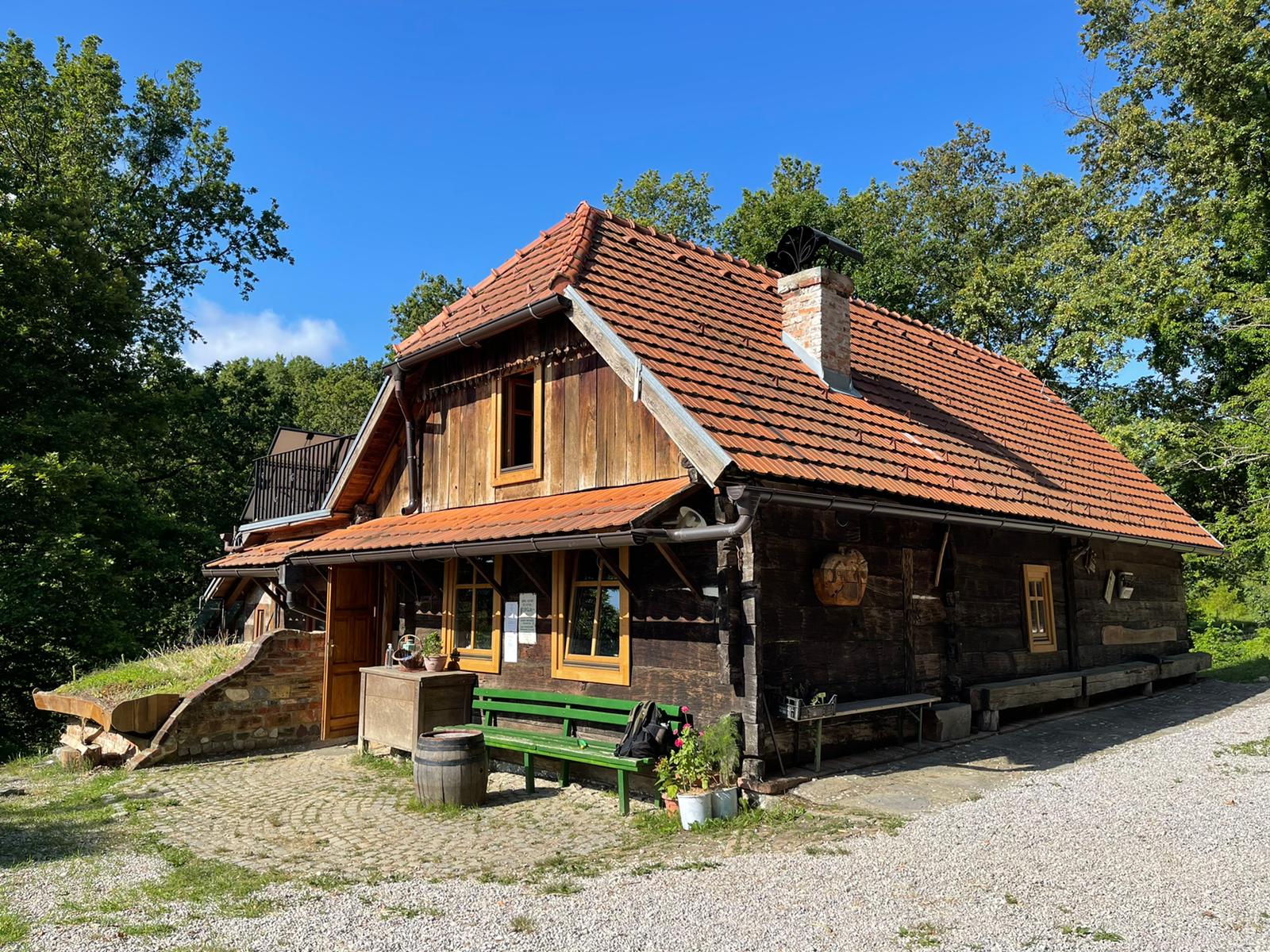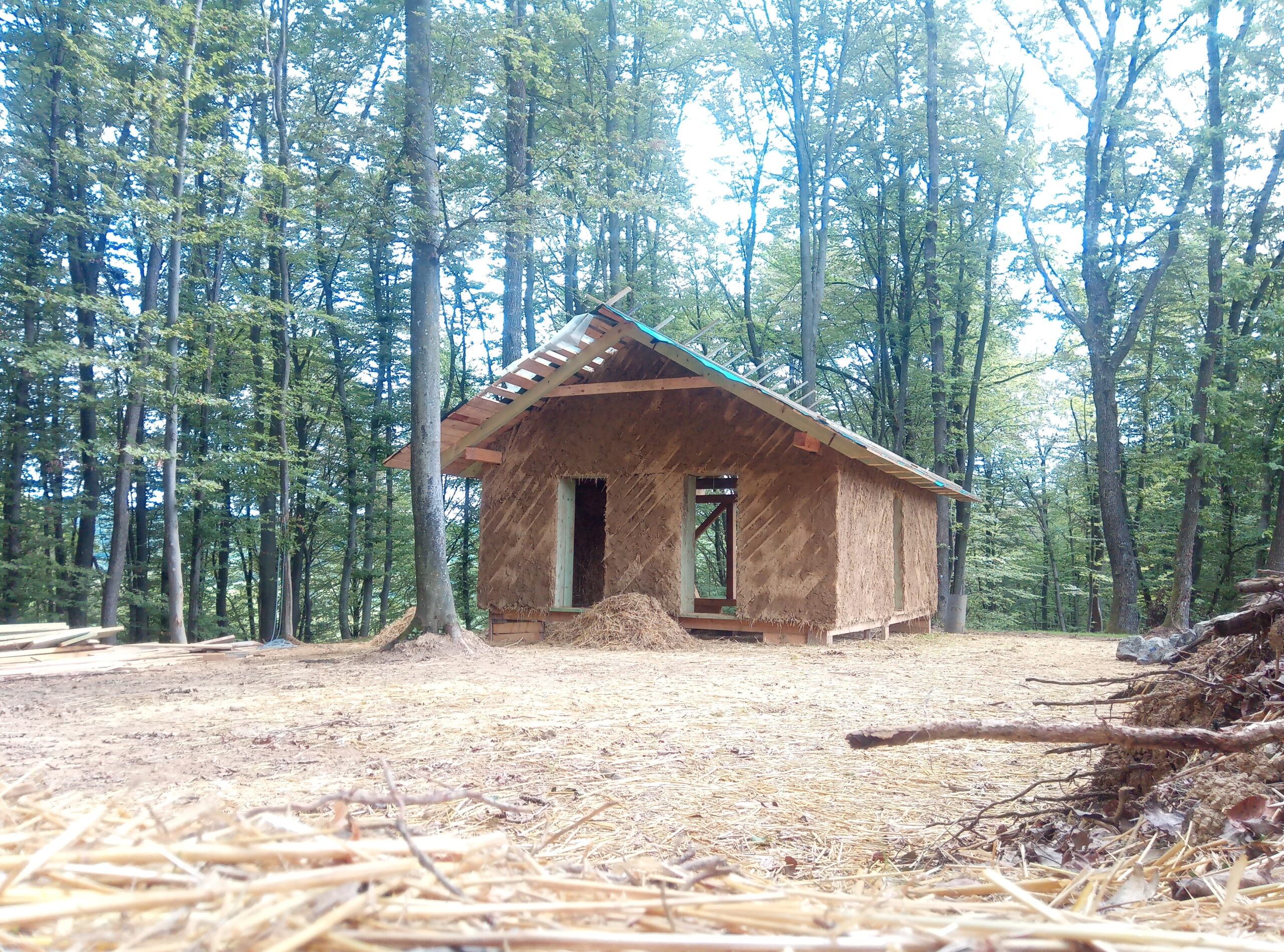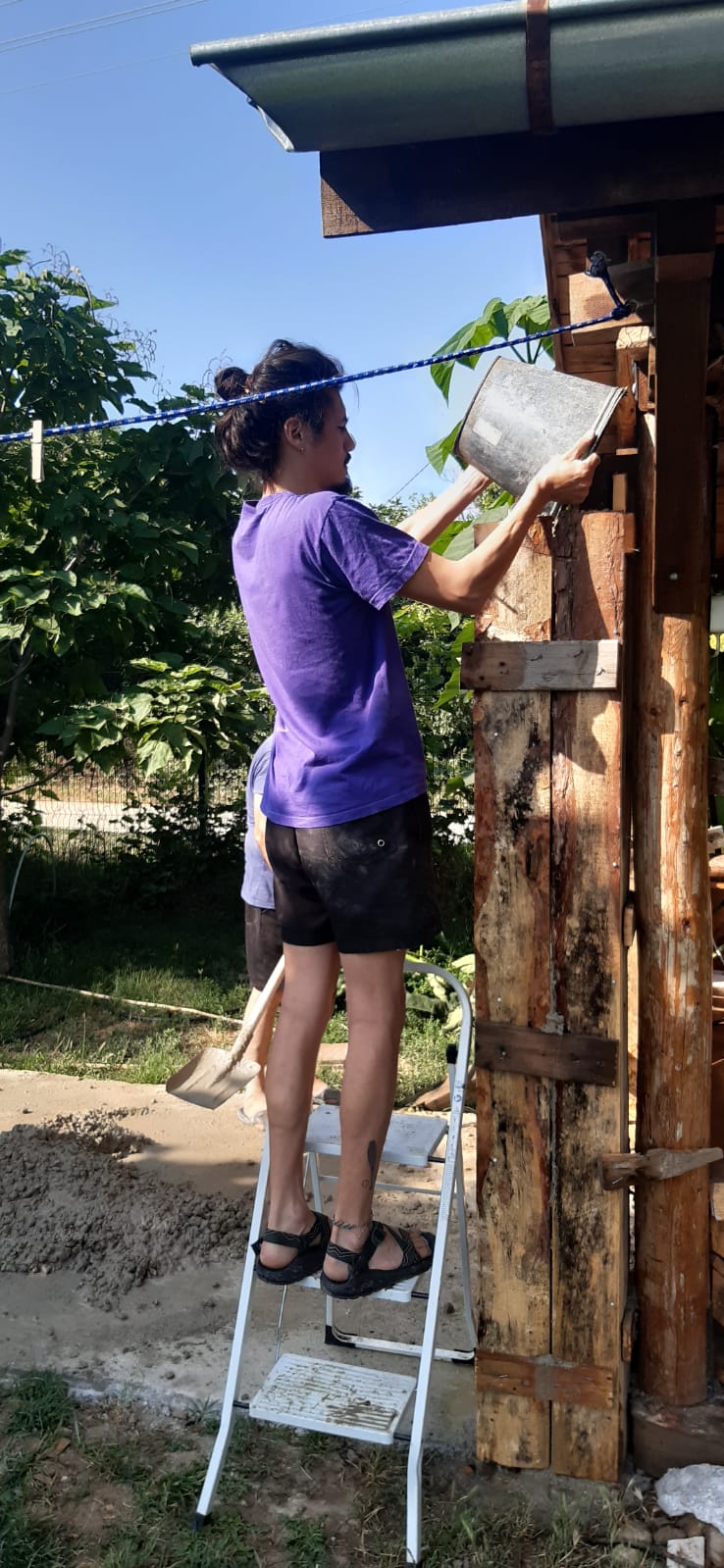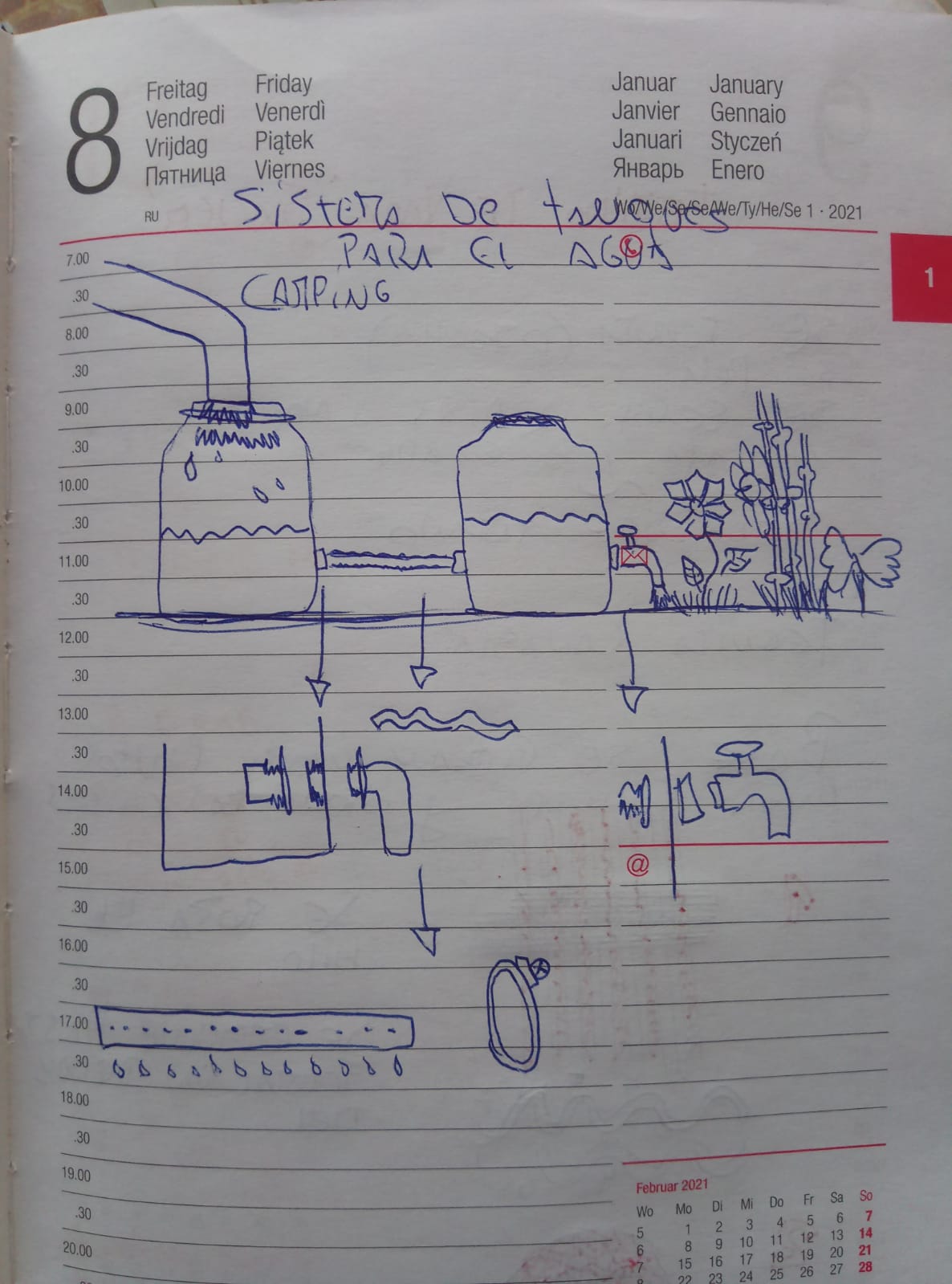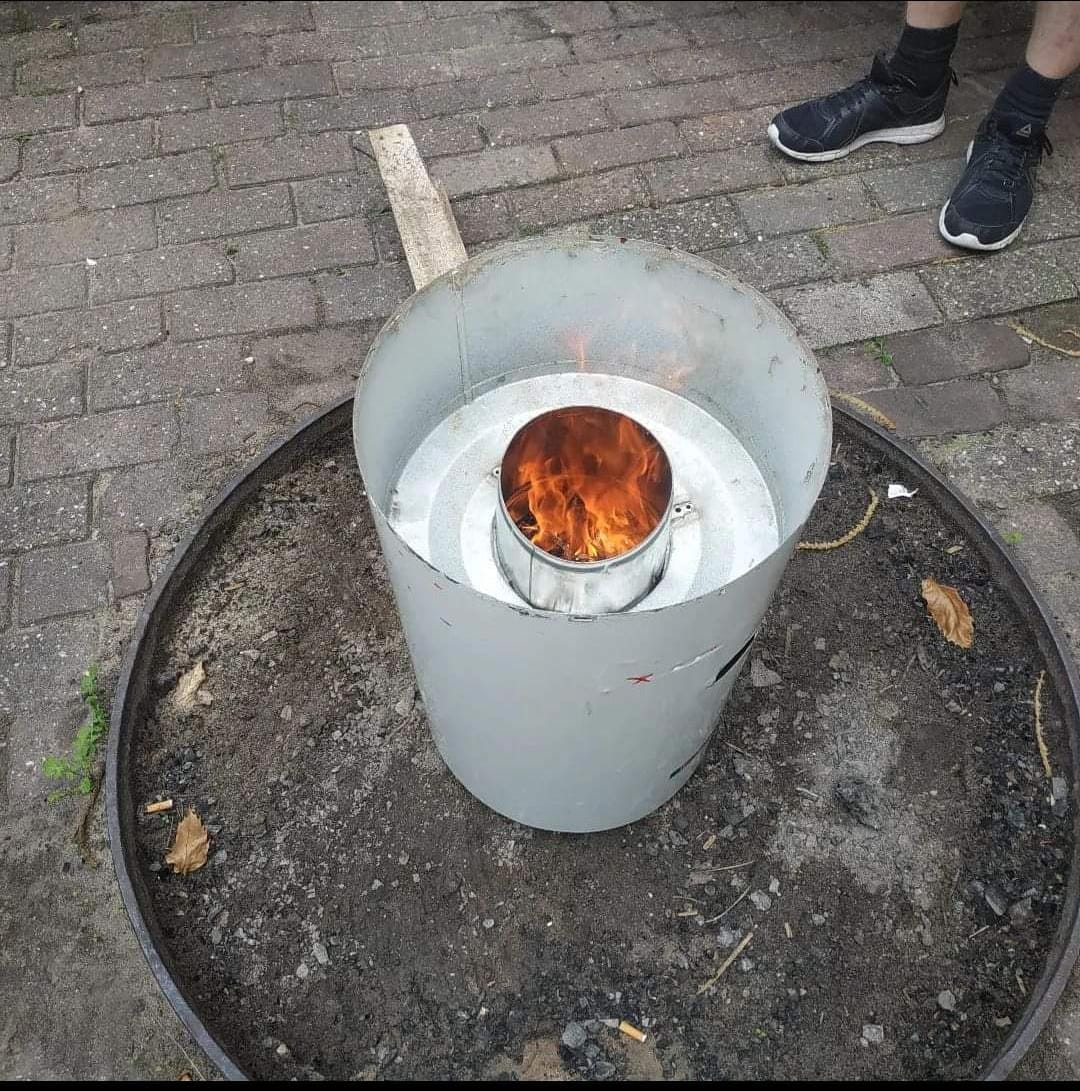Ewan:
Hello hello, welcome back to the blog! I’m going to pick up where I left off on this blog post, with some updates on the restoration of the big barrel which I wrote about last week. My first task this week was to sand, varnish and paint the two halves of the barrel, which took me much longer than I expected. You can see the results in the images attached, and their new places in the dry garden. You can also look back to last week’s post to see the difference, I think they look much better if I say so myself!

The next day I did a variety of different tasks, and I’ll talk you through each one of them now. In the morning, on a dog walk, I decided to take a tote bag and pick some local plants. Mullein is a plant that grows in the area, and it supposedly has lots of health benefits. “It can help clear the lungs of mucus and reduce inflammation. It’s used to treat cough, pneumonia and all sorts of respiratory problems.”. So, quite a handy plant to have in the house. On our way back from the walk, we notices a tree with lots of ripe apricots, so later in the day after the temperature had become a bit more bearable, I set off to pick a bag full. A bit of a call back to previous weeks now, as I carried on a task that was started by Vyara a while back. You may remember her talking about picking lavender, tying it up in bundles and leaving them to dry out. Well, this week, I finished off this job, by taking all the lavender off the stems and then putting them in a jar with some coconut oil to make lavender oil. “Lavender oil can be taken orally, applied to the skin and breathed in through aromatherapy. It can benefit the skin in numerous ways. It has the ability to lessen acne, help even skin tone and reduce wrinkles.” Later on in the day, we had the pleasure of visiting a local business, the Orbelus organic winery. We had a little tour of the winery, and they informed us that Orbelus’s goal is to produce wine in a nature-conscious manner and to guarantee its ecological purity. While we were in the area, we also went to collect some clay that John had spotted, so we could use it in the garden.
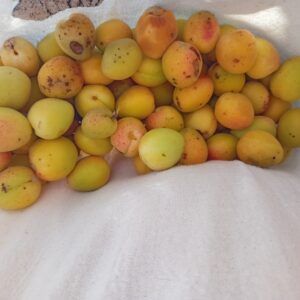
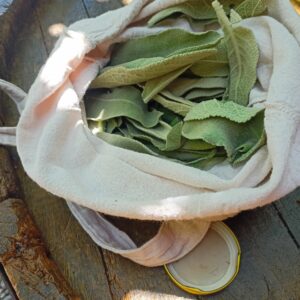

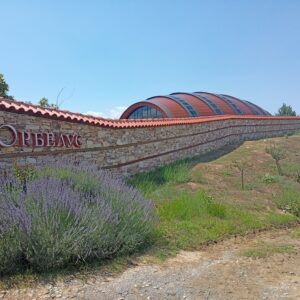
Another big job we did this week was collect a load of scaffolding from the neighbours’ house. This was helpful for the neighbours, as they had no way of getting rid of it, and helpful for the hosts, as they can use it to make a variety of structures and useful things for the garden. That same afternoon, John and I went to wash more bottles, as another brew was done a few days prior, which I’m sure Renzo will tell you about. While there, we noticed quite a lot of rubbish lying around. So, after washing the bottles and taking them back to the house, we returned with some bin bags and tidied up the area. We left one of the bags there, in the hope that others who use the area will notice it and put their rubbish in there instead of on the floor 🙂
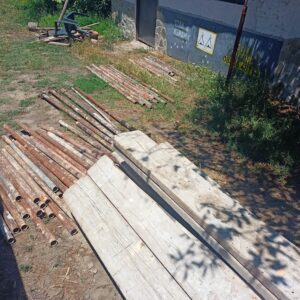
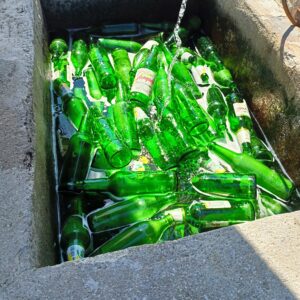
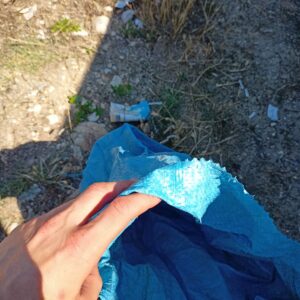
Thursday was actually my birthday, so I did a few jobs in the morning before taking the afternoon off. I helped out Sara in the dry garden, repositioning the barrels and filling them with soil and manure. We also made some lemonade, using lemons that were reduced in the shop because they were nearing their use-by date. Anyway, that’s it from me, see you next week 🙂
Mali:
Zdraveite!
Ten days ago I received a last minute confirmation that I was accepted as a participant for a Teaching Permaculture Training (TPT) in Ecovillage Vukomerić in Croatia, where Misha herself would be one of the co-teachers. This explains the little silence from my side whilst traveling with her and Philip, to learn all about teaching and designing a PDC in this beautiful place with an inspiring group of people who are on a similar path as me (see the first two photos). In total we had five moments to practice our teaching skills; the first three times alone, the fourth time in couples and the final presentation in a group of four showing our design of a PDC (permaculture design course). I was happy to be invited to facilitate a session on dragon dreaming (see photo with people sitting in a circle), a beautiful, participatory method for project design that I have worked with in various occasions in the past and really hope to bring out more into the world.
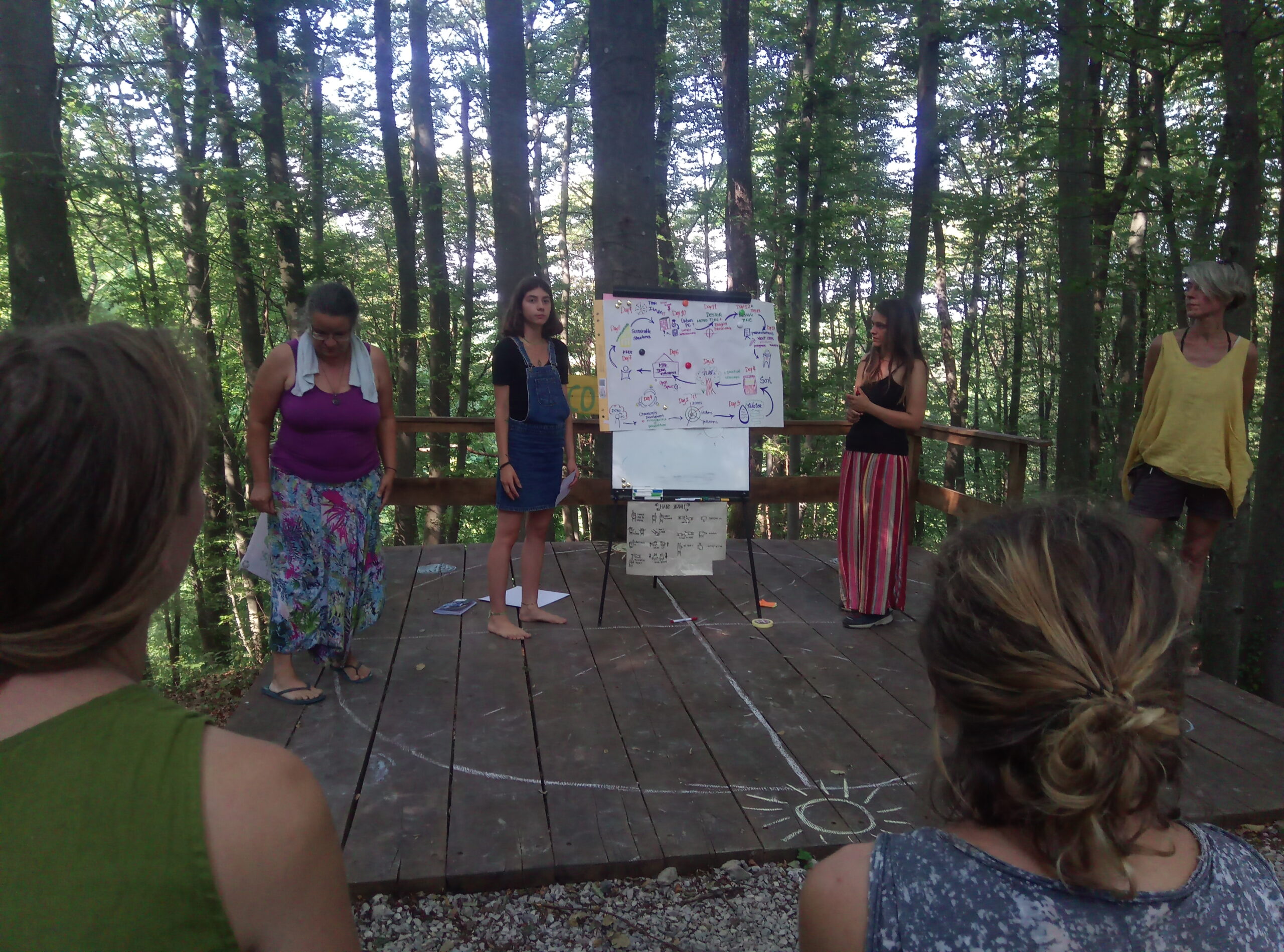
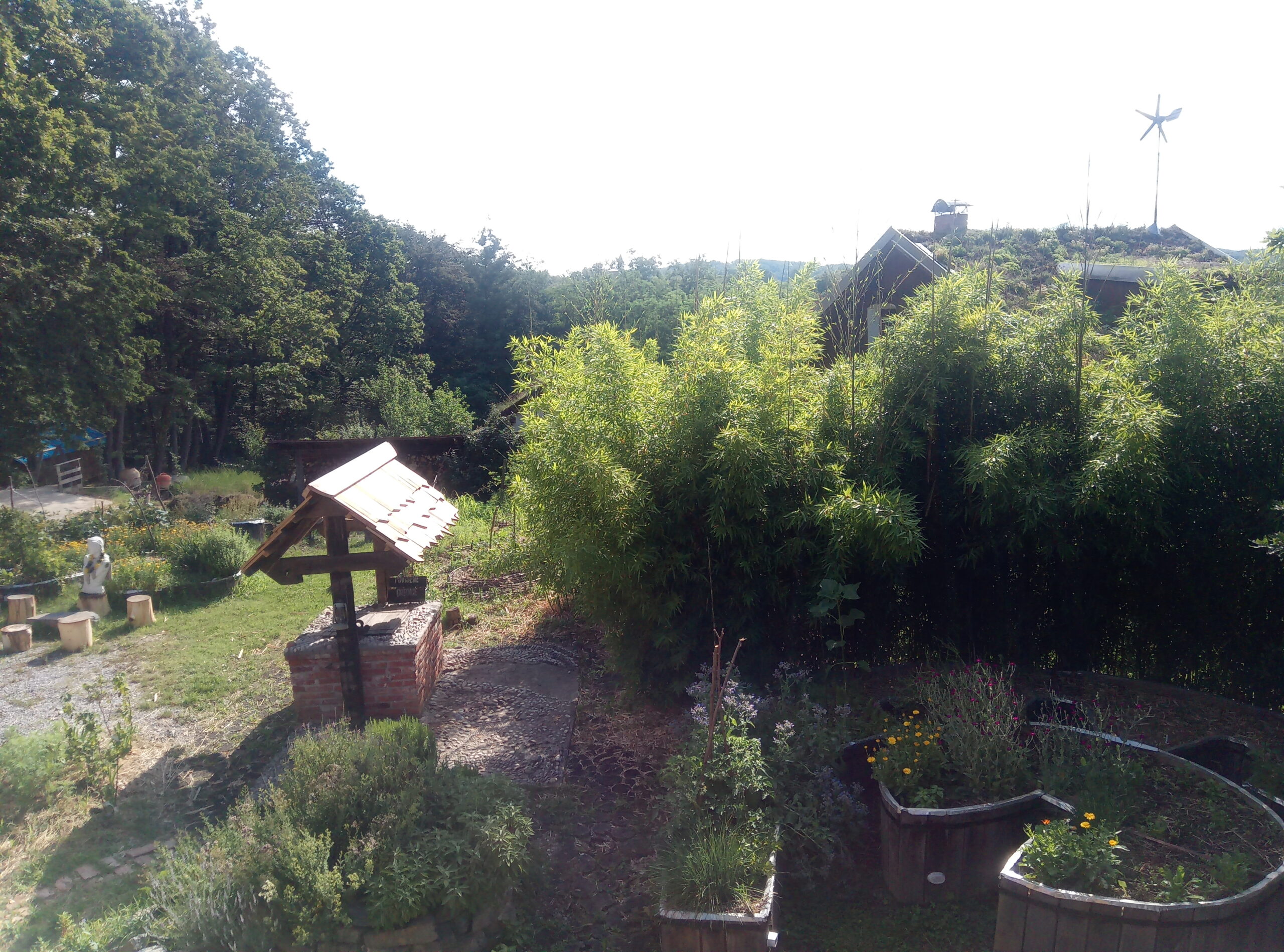
In the middle of the intensive week, we visited a neighbour, Bruno Motik, who was one of the founders of Vukomerić. Besides many years of experience as a permaculture designer and teacher, he has grown to be a well-known developer of agricultural hand tools for regenerative farmers, permaculturists, market gardeners and the like (check out his website here). On the photo you see him showing us his upgraded version of the broadfork (invented in the ’60s in France, where it was called ‘la grelinette‘) and explains how this tool helps you to crack open the soil just as much to aerate it well, but without destroying the soil structure and disturbing the important soil organisms at work.
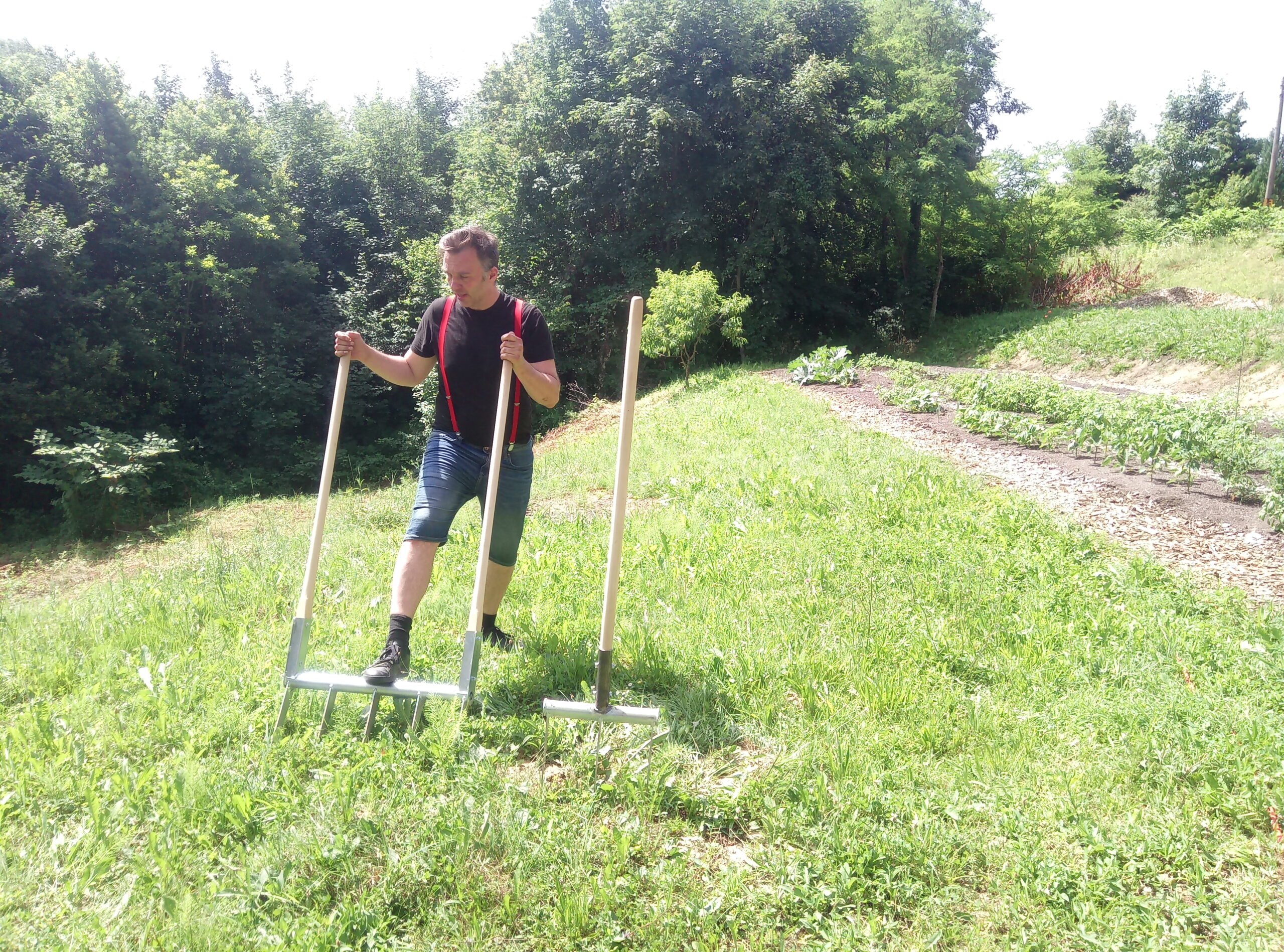
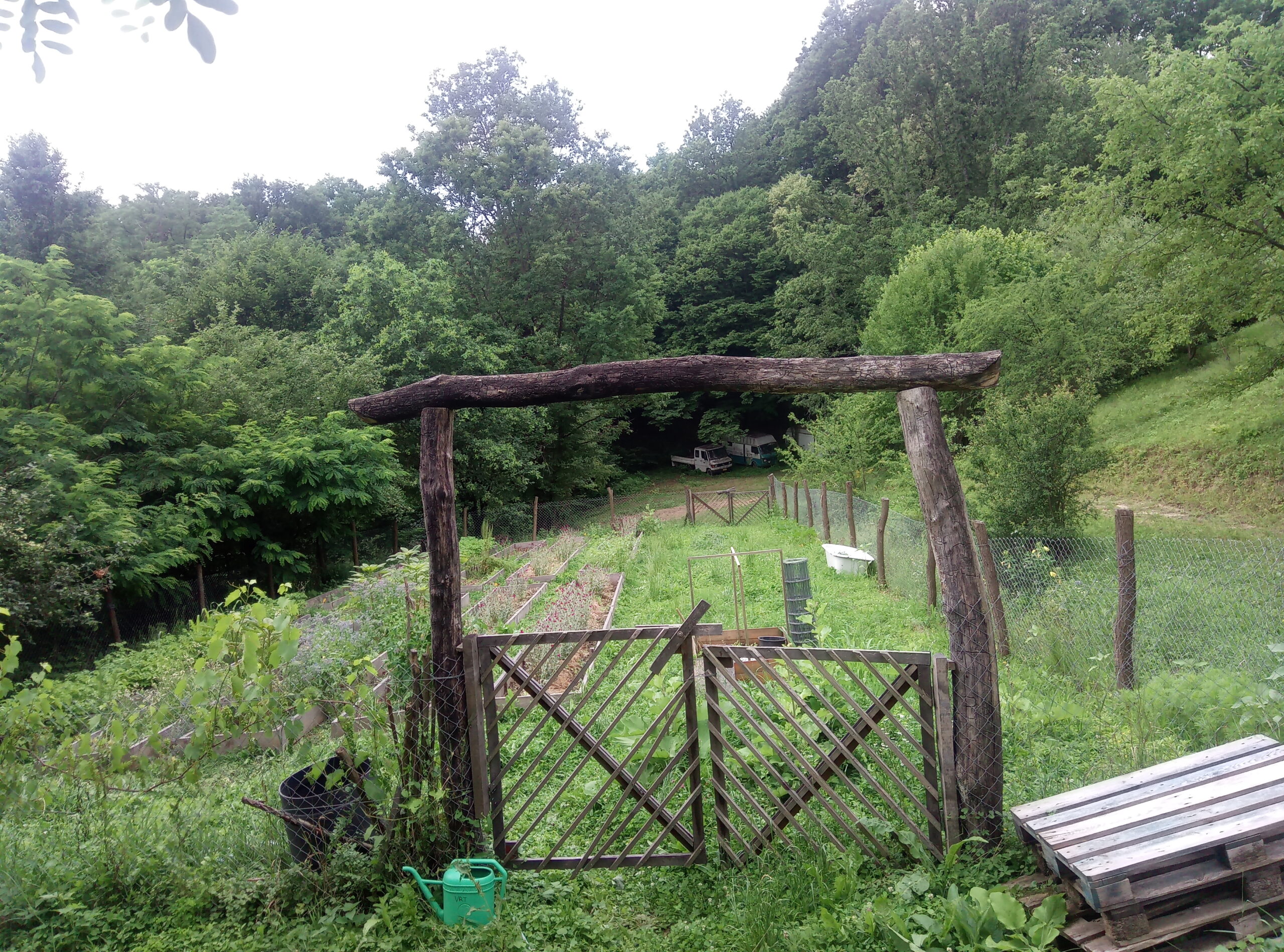
One of the tasks for the volunteers in this ESC project, is to help improve and create new permaculture teaching materials, which in my case will be mostly focused on the TPT that was based on Rosemary Morrow’s teaching course guide (you see me preparing some posters at the start of the TPT).
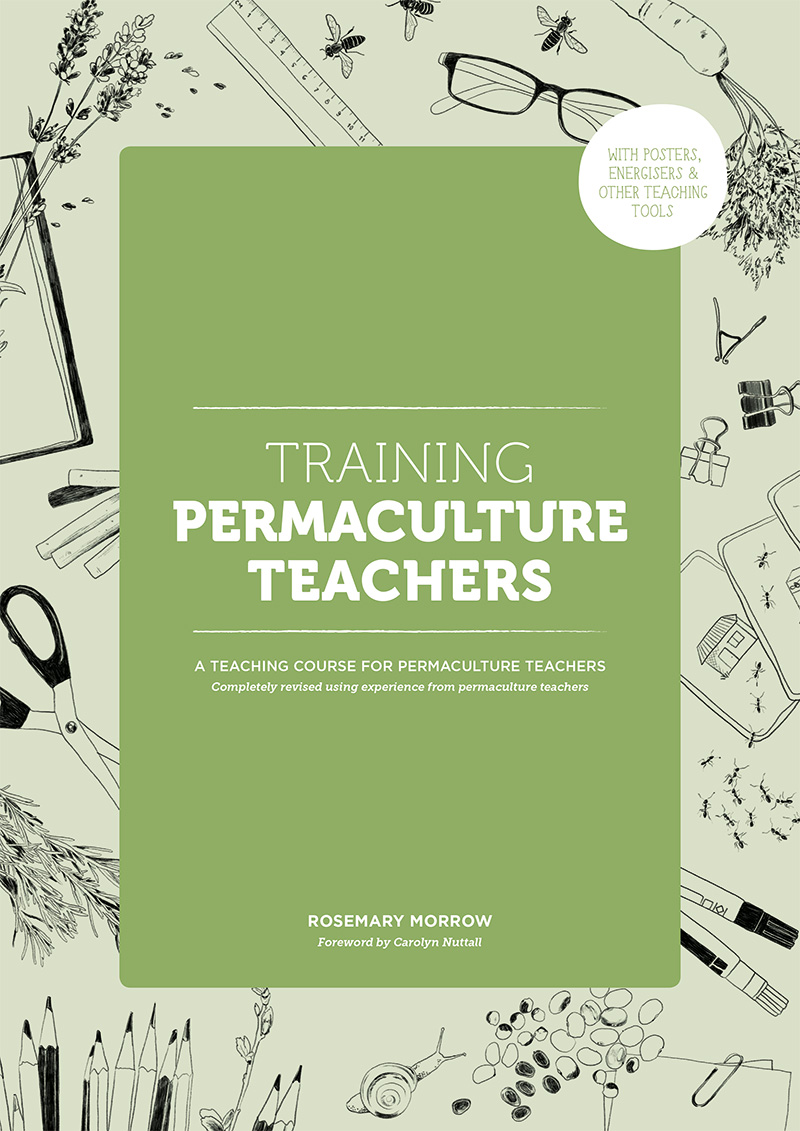
Now my main focus is on packing our bags and head to our first rural ESC project together with Renzo! The project is called Venets, and is an organic farm that successfully pioneers in growing polycultures and integrating permaculture design at a commercial scale in Northern Bulgaria, some 3 hours away by train from Sofia. I am sure there is a lot to to learn from working with Catherine and her team, and I can’t wait to breath in fresh air out in the fields and taste her healthy veggies! 🙂
Renzo:
Hello everyone! I wrapped up my 10 days at the Kromidovo campsite with a variety of new experiences to me. I enjoyed being in contact with a natural place, without being surrounded by sky-high buildings or lots of trash on the streets. Instead, I enjoyed seeing traditional houses made of adobe (mud brick) and mingle myself into an environment with other languages which was both a challenging and rewarding experience.
The tasks were varied; I helped build the pillars of the summer kitchen (with cement), filled the garden with earth and made a rock and mud bed around a tree in the yard. I would like to say that it is very important for me to be able to learn techniques with mud since it is a healthy, non-polluting element, that is versatile and super resistant for construction, and reusable! In addition, the family asked me for an idea to connect two bins to collect rainwater, which can be done by means of an elbow hose and tap, something simple but necessary to take advantage of the water in these rains (see my sketch that I made to show Sara).
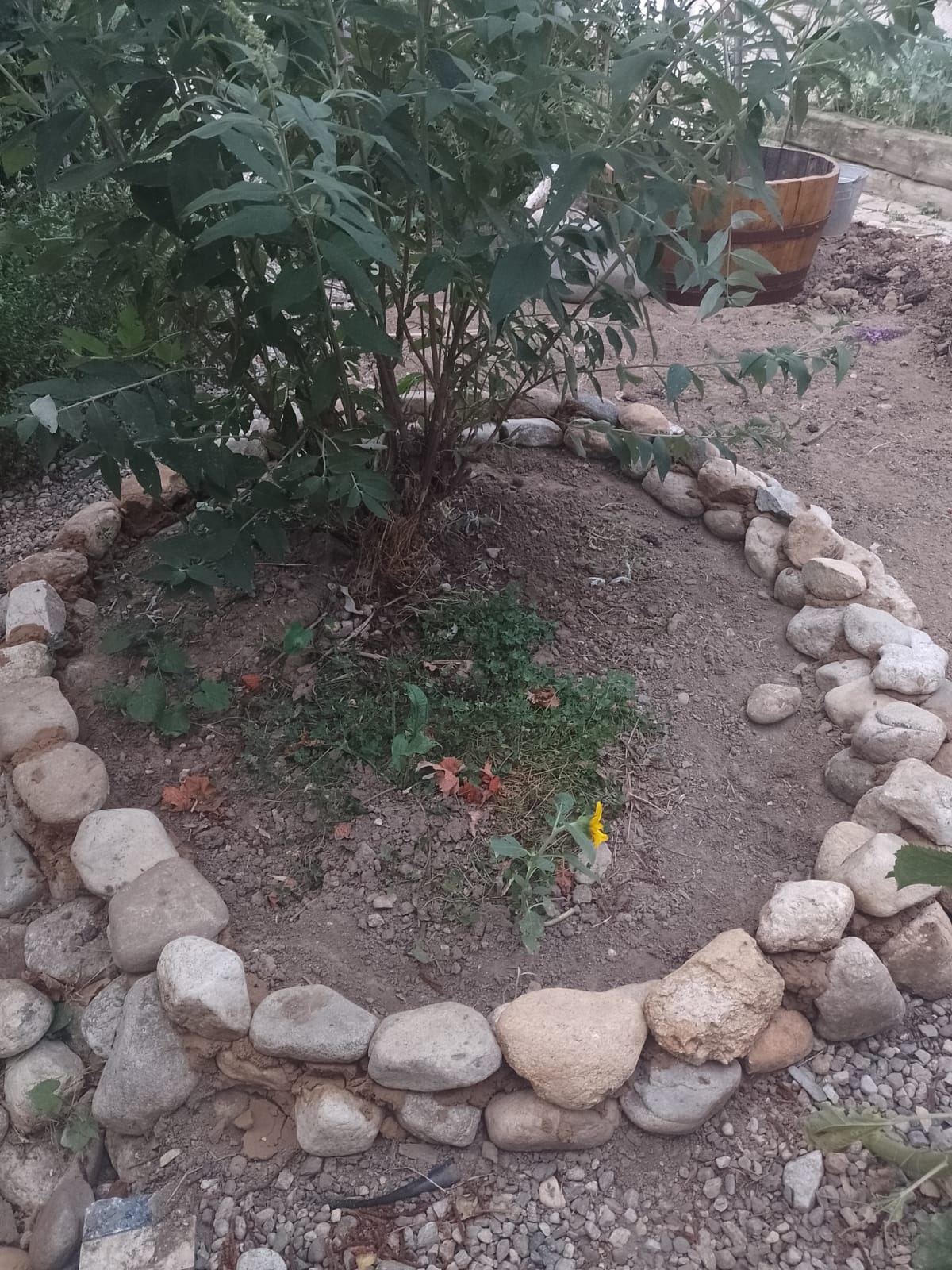
The last day with 25 degrees at 3:33 in the morning, it was impossible for me to sleep (I am a Patagonian penguin traveling the world, haha). I got up and went outside to look at the stars, when all of a sudden I saw a great glow from a fire with a lot of smoke. In the neighbor’s field they were setting fire to the grassland. This led me to investigate this type of practice; the combustion reaction from burning biomass is polluting, very dangerous, and destructive to microorganisms, fauna and flora not resistant to fire. There are some fire-resistant species, so-called pyrophilous plants or fungi, that have adapted to areas where fires are not caused by man. These types of practices are often used to remove weeds and prepare the land for a new agricultural cycle. A more environmentally friendly method could be to use cardboard to cover the soil with or once already growing your edibles to use straw mulch, which both avoid the soil to dry out, so helping to maintain the soil humidity. Seen from the permaculture mindset, it is important to observe and analyze which plants naturally grow in your field (without immediately calling them ‘bad weeds’) and to figure out what they can tell you as indicator plants regarding any lack or abundance of different (micro / macro) nutrients and the pH of your soil amongst others. Instead of eliminating them with a blink of your eye. Nature ‘knows’ and they are there for a reason.
With regard to the burning of grasslands for compost, a good way to improve your soil is to make and add biochar. This technique uses biomass (branches, bark, straw a.o.) that are burnt in a controlled way, with oxygen intake being restricted. It is used to retain water, provide nutrients and improve aeration and structure of the soil, control the pH and restore the natural balance of the soil. In the above photo you can see an example of a biochar cooking stove (photo and building credits of Mali’s permaculture teacher Rakesh Rootsman Rak), following the permaculture principle of stacking functions! I will study this technique more over the coming time, so I can tell you more about it in the near future.

